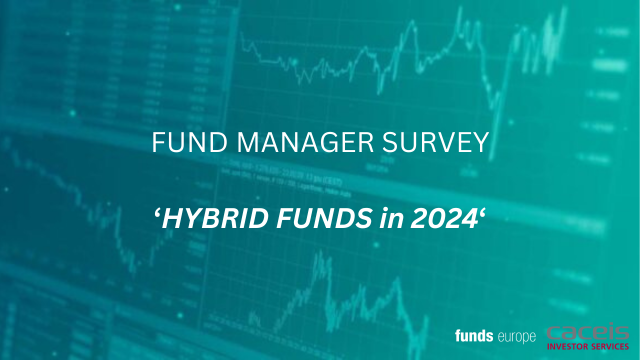The moving of supply chains closer to home markets, the increasingly prevalent phenomenon known as near-shoring, is one of the key trends in emerging markets investing, finds Piyasi Mitra.
Emerging market central banks including those in India, Mexico, Turkey and Brazil aggressively raised interest rates last year to curb inflation as part of a post-pandemic era push which saw emerging market central banks raising interest rates higher than advanced economies, averaging a 780 basis points hike compared to 400 basis points in advanced economies.
According to an analysis by the International Monetary Fund, this wider interest rate gap helped shield these emerging markets from external pressures.
Near-shoring helps
Mauro Ratto, co-CIO of Milan-based investment boutique Plenisfer Investments SGR, says that protectionism and the current geo-political situation have led to a decline in US-China trade activity. Consequently, re-shoring has benefited India, Taiwan, Korea and Mexico, with Vietnam also poised to gain.
“Central banks in emerging markets have consistently been investing in gold, and gold-related consumption is also increasing,” shares Ratto.
“Central banks in emerging markets have consistently been investing in gold, and gold-related consumption is also increasing.”
But not all countries are made equal, cautions Xavier Hovasse, head of EM equities at asset manager Carmignac, who sees the best opportunities in India, Mexico and Brazil – as these countries are beneficiaries of current geopolitical tensions.
Patricia Ribeiro, co-chief investment officer, global growth equity, at investment management firm American Century Investments, also expects economic growth to accelerate in Latin America. “Pandemic shocks and geopolitical tensions are reordering trade relationships and fuelling the nearshoring trend. Mexico has played a crucial role and experienced an increase in FDI as businesses opt for shorter supply chains,” says Ribeiro.
India, reasons Hovasse, is poised for broad-based, multi-year growth thanks to various factors: a young, skilled population, a well-regulated banking sector, advanced payment systems and favourable geopolitical conditions. Additionally, prospects of Prime Minister Narendra Modi’s re-election in May this year could further boost business confidence.
Mexico benefits from US-China tensions too, says Hovasse. The long-term trend of “near-shoring,” moving supply chains closer to home, could significantly increase US investments in Mexico, he says.
Meanwhile, Brazil’s orthodox economic policy, featuring early interest rate hikes, slashed inflation from 12.1% in April 2022 to 4.6% in December 2023.
According to Hovasse, this shift allowed the central bank to revert to easing monetary policy, fostering a positive outlook for equity markets. Economic tailwinds in the agriculture and oil sectors are set to propel Brazil’s trade expansion and bolster its equities, currently trading at a significant discount.
“We favour Brazil’s utility sector, given its strong infrastructure needs and attractive growth prospects, and refrain from investing in Saudi Arabia due to the prevalence of state-owned enterprises with poor corporate governance and capital allocation decisions, which disadvantage minority shareholders,” adds Hovasse.
“Additionally, we avoid capital-intensive industries such as oil and gas. Instead, we favour cash-generative, asset-light business.”
EM corporate bonds
Matt Christ, portfolio manager in the fixed income team at the Anglo-South African asset manager Ninety One, notes that in recent economic cycles developed markets have outsourced production of essential materials like steel, cement, chemicals, and plastics, crucial for future needs, despite their high emissions. These firms, often national champions with global operations, have a long-standing presence in bond markets, adds Christ.
Opportunities await investors in emerging market corporate bonds, he opines. This includes building material manufacturers like Mexico-based Cemex which expects to achieve its emissions targets for 2030 five years early and ahead of global peers.
Similar examples of aggressive short-term reduction commitments combined with finding ways to produce “green steel”, created using energy from renewable sources, can also be seen in South Korean steel company Posco, or white goods manufacturer Arçelik in Turkey.
“These firms, located in emerging, middle-income markets with good corporate governance, are addressing industrial emissions within their respective markets,” says Christ. “The most tangible opportunities we’re seeing today is in project finance debt either in the form of bonds or loans to develop renewable energy infrastructure.”
“The most tangible opportunities we’re seeing today is in project finance debt either in the form of bonds or loans to develop renewable energy infrastructure.”
Many classic middle market companies in emerging markets are leading the charge in addressing climate change by developing solutions in sectors like building materials. Decades-old companies are specialising in essential mineral production like metallic silicon for solar panels, stainless steel parts for wind turbines or electric vehicle batteries. Despite steady growth, they lack sufficient cash flow for bonds, relying instead on bridge financing to fuel their expansion, shares Christ.
Examples of innovation include a Latin American company producing a proprietary panel-based building material to replace traditional brick and concrete, reducing energy leakage.
Meanwhile, an Indian company offers immersion cooling solutions for data centres, enhancing energy efficiency in high-powered artificial intelligence computing by 50% through liquid-based technology.
Despite the underutilisation of private credit in Europe and the US, only 20-30 basis points of total global private credit raised in the last decade have flowed to emerging markets. According to Christ, this trend underscores the resilience of businesses with defensive models, strong structural protection and conservative balance sheets.
Emerging markets excluding China require investment of around $1 trillion annually for decarbonisation until 2050, estimates the International Energy Agency. But only about $150 billion is currently being allocated annually. To bridge this $850 billion gap, investors need opportunities offering impactful outcomes alongside commercially attractive, risk-adjusted returns.
Indian conglomerates are investing in cutting-edge decarbonisation like green hydrogen, highlights Christ, while Latin America prioritises decarbonisation infrastructure, and Chile is tackling water scarcity with advanced reverse osmosis desalination techniques. In short, innovation in emerging market finance highlights a global move toward sustainability and resilience, with diverse regions adopting pioneering technologies to tackle environmental challenges.
Rewards and risks
Sergey Sobolev and Mustafa Ulukan, of Boston-headquartered investment manager GMO’s emerging country debt team, cite data from the firm’s quarterly valuation report, showing that emerging debt credit spreads are attractive compared to expected credit losses and historical trends.
They also note that high-quality emerging market infrastructure and hard currency bonds in the energy transition opportunity set are similarly well-valued.
On the digital front, Asian tech and semiconductor firms like Taiwan Semiconductor and Samsung Electronics would likely gain from the AI revolution, emphasises Hovasse.
Emerging market digital economies, fuelled by cashless transactions, will propel e-commerce adoption of digital payment solutions, fostering financial technology innovation, predicts Kevin Carter, the founder and CIO of San Francisco-based EMQQ Global, which invests in emerging and frontier markets tech firms.
“The real potential lies in the technology, but many strategies fail to include internet leaders while providing higher exposure to state-owned enterprises,” he says.
Carter describes India as the “perfect emerging market for investors”, thanks to rapid smartphone adoption, its young demographic and growing middle class of consumers.
The International Monetary Fund revised India’s growth forecast to 6.8% from the previous 6.5%. India maintains its position as the world’s fastest-growing economy, outpacing China, which is projected to grow at 4.6% during the same period. By 2030, its GDP is forecast to hit $7.3 trillion, overtaking Japan as the second-largest economy in the Apac. By the same year, India’s GDP is anticipated to surpass Germany’s.
Hovasse sees an uptick in manufacturing investments, potentially leading to a capex upcycle next year after nearly a decade of low investments, driving economic growth. “Despite India’s high valuations being a concern, certain sectors, like banking, offer reasonable valuations. Private banks are attractively priced and positioned to benefit from robust economic growth. Therefore, our allocations include exposure to Indian banks and insurance companies.”
“Despite India’s high valuations being a concern, certain sectors, like banking, offer reasonable valuations. Private banks are attractively priced and positioned to benefit from robust economic growth. Therefore, our allocations include exposure to Indian banks and insurance companies.”
China’s ambitious 5% GDP growth target for 2024 faces scepticism, but policymakers prioritise key industries for technological leadership and productivity growth, says Plenisfer’s Ratto.
One priority is to achieve a sustainable and realistic real GDP growth of around 3%, he points out. “Given attractive valuations, we take a prudent, contrarian stance on investing in chosen Chinese equities.”
On the other hand, Australian investment manager specialising in emerging markets equities, Ox Capital’s outlook highlights that China’s rapid technological advancement would spawn businesses. Despite economic adjustments, China’s low equities valuations and high equity risk premium offer an appealing risk-reward profile. According to the investment manager, companies like Tencent, Tencent Music and Kuaishou are anticipated to maintain strong growth rates, leveraging their market dominance.
Christ too, talks about a “portfolio disconnect” in China in his firm’s geographic breakdown. “We observe limited offshore financing opportunities that align with our impact assessment framework for a clean portfolio, resulting in a small allocation.”
Emerging markets are adapting to global shifts with near-shoring and sound economic policies. Near-shoring is reshaping emerging markets, with countries like India, Mexico, and Brazil capitalising on geopolitical shifts. While risks persist, investors seem to have found a landscape ripe for sustainable growth.





